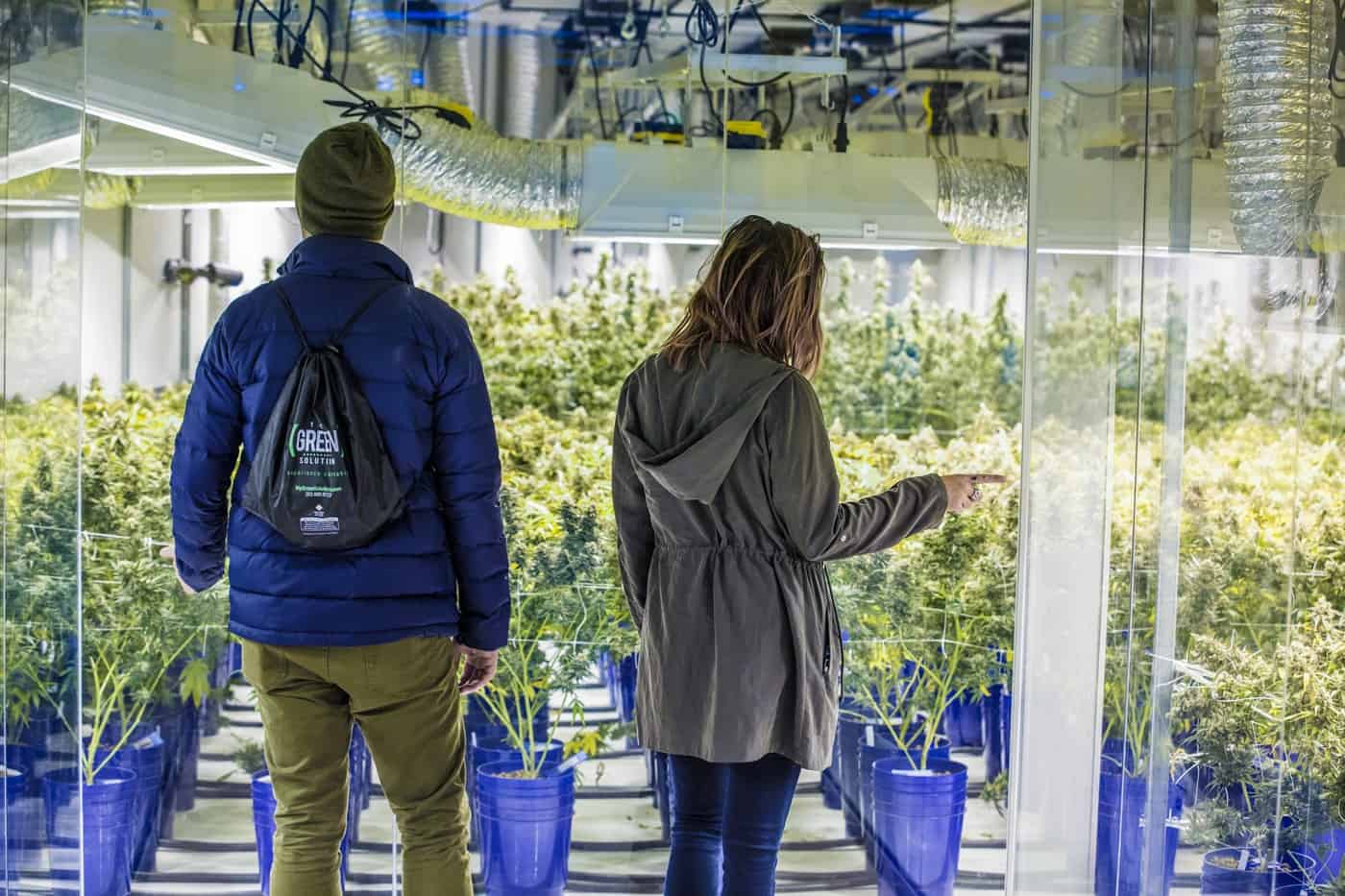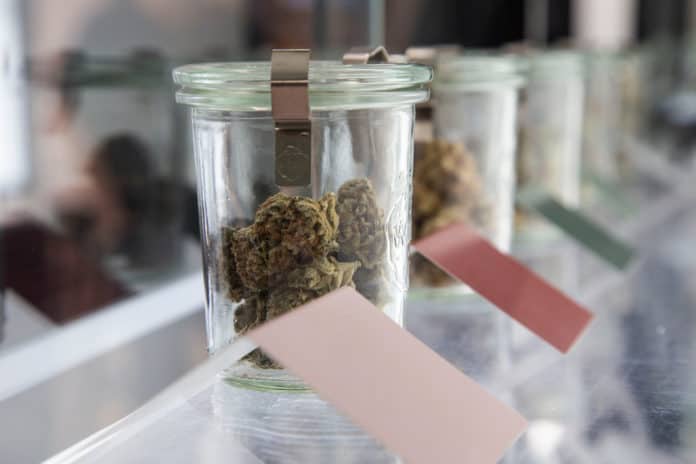Cannabis dispensaries must deal with a lot of moving parts, so reducing the chances for kinks in the seed-to-sale process can provide peace of mind and limit potential for unforeseen complications. Vertical integration of dispensaries and grows can go a long way toward establishing control; however, not all states allow grows and dispensaries to colocate. Costs, security, odor control, and zoning also come into play when considering an on-site grow.
So, what are the advantages…and disadvantages?
Shaya Brodchandel, chief executive officer for Harmony Dispensary in Secaucus, New Jersey, loves the control offered by hosting both cultivation and sales operations at the same location. “Growing our own product allows us to be fully confident in the product we offer consumers,” Brodchandel said.
Locating the grow and the dispensary in the same place also gives patients extra confidence in the products they buy, he added, because patients have access to the people cultivating the medicine. “Any feedback from our customers goes directly to our growers, allowing us to easily alter our products to deliver exactly what consumers want,” Brodchandel said. Issues with flower from an outside source can be difficult, or even impossible, to correct. The same is not true when the store grows its own. “Growing our own product means we avoid potential disappointments from third parties who might not meet our high standard of quality, consistency, quantity, or delivery requirements,” he said.
The ability to provide extensive details about a product from start to finish instills extra confidence in patients, as well. “Today, everyone is becoming increasingly conscious of ‘the source’ of any product they consume,” Brodchandel said.
Not everything is rosy, though, he noted. An on-site grow can increase the potential for theft and vandalism. “I recommend any dispensary with a grow facility on site maintain a close relationship with their local police department and invest in quality staff screening,” Brodchandel advised.
Ideal Harvest designs and constructs cannabis grow operations for dispensaries in several states and Canada. Chief Executive Officer Sheryl Mizicko is a fan of vertical integration.
“One of the major advantages you gain by having a grow on site—or, at a minimum, having your own cultivation facility—is the ability to control your supply chain, costs, and availability,” she said. “If you are verticalized, you can also control the flow of products in and out of your company, meaning you produce only what you can sell and slow down production if you can’t [sell everything you grow].”
Maintaining grow operations on-site does not eliminate the need to purchase products from suppliers, but it does provide flexibility. Even if dispensaries have access to a quality supply chain, there will be times when suppliers are not able to meet demand. “I know manufacturers, for example, who have small grows on site even if they are buying the bulk from others,” Mizicko said. “If there are price, supply, or quality fluctuations, they always have a backup supply to draw from.”
Although dispensaries may need to invest considerable time, effort, and money to produce their own products, the reward for doing so could be an increase in the bottom line. “You can absolutely market, brand, and demand higher sell prices for superior-quality products,” Mizicko said. She compared the concept to the “farm-to-table” movement sweeping culinary circles.
Mizicko, too, harbors security concerns for dispensaries that grow on site, and they go beyond the typical fears about external theft. “When you have the entire supply chain at the same location, you run a higher risk of sloppy transfer procedures from one license to another in the supply chain,” she said. Breaks in the compliance chain tend to occur between the cultivation and extraction stages and between manufacturing and retail. Not following procedures to the letter of the law can bring unwanted attention from regulators. “The greatest failures in tracking and compliance are often at the points of handoff,” Mizicko said.
Some security issues are alleviated by on-site grows, though. For one, shops can experience cost savings if they do not have to pay top dollar to ensure product is safely transported from an off-site facility to the dispensary. Although the practice is not recommended by Mizicko, some shops direct employees to transport product to the dispensary, potentially putting them at risk or increasing the opportunity for internal theft.
The advisability of constructing a grow on-site varies from jurisdiction to jurisdiction. Each market has its own set of regulations. “I have seen so many people go into the industry with the singular tunnel-vision purpose of getting their license with no actual thought to what the end-goal of their business will be,” Mizicko said. If a shop is able to sell only vape oils or extracts, management may not want to dedicate significant space to growing or curing. “If your primary market is flower, then your customers will care more about a well-cured end product,” Mizicko said. “If you don’t design your facility for the market you’ll be selling to now and have a plan to continue to grow as the market does, you’ll be in trouble at some point with your business.”

Steve Lopez, chief executive officer for The Green Solution, oversees seventeen dispensaries in Colorado. At the Grape Street location in Denver, a viewing tunnel allows customers to watch the process that creates the flower they eventually may buy.
“Most of our customers have never seen a grow before, or even a live cannabis plant, so our viewing area is always a highlight for first-time visitors,” Lopez said. “Every day we have customers taking selfies with the plants and photos of the viewing area. It’s extremely popular.”
In his opinion, the visible grow helps build trust. “Having our grow on site demonstrates our level of commitment to plant care and cleanliness, which also increases transparency with our customers,” he said.
As Sy Syms of off-price clothing retailer Syms Corporation famously said, an educated customer is the best customer. Lopez believes the viewing tunnel at Green Solutions performs exactly that function. “The on-site grow allows us to provide a visual explanation of the process, which increases customer education about cannabis production,” he said.
No one way of running a cannabis business is best—or even possible—for everyone. Growing on site may work for some companies in markets where regulations permit. Offering consumers a “farm-to-bong” experience certainly fits with the industry’s health-and-wellness imperative, and it can provide education and entertainment, as well.
(This story originally appeared in mg’s special Q3|2019 Science of Cultivation issue.)








